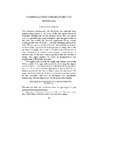Understanding unemployment in Botswana

View/
Date
2003Author
Siphambe, H.K.
Publisher
John Wiley, www.wiley.comType
Published ArticleMetadata
Show full item recordAbstract
The impressive performance that Botswana has achieved since gaining independence in 1966 is one of the few success stories of economic development in sub-Saharan Africa. For the period 1965-1990, growth in per capita averaged 8.4 per cent per annum. In the 1990’s the country has however experienced lower average annual growth rates of about 1.7 per cent (Freeman and Lindaur, 1999). The fast growth in the 1970s and 1980s enabled the country to move from a position of severe poverty to being one of the richest in the region, and is one of the few in sub-Saharan Africa now classified as a middle-income country. Unemployment is however one of the most serious problems that the country is facing. This paper explores the issues of unemployment and employment in Botswana’ economy.
This paper looks at both the supply and demand side of the labour market. Our supply side analysis involves using the original 1995/96 Labour Force Survey data to understand the unemployed. Part of the process involves specifying a probit function to determine precisely the factors determining unemployment. The paper also looks at the demand for labour by various key sectors of the economy, and tries to determine the quantitative relationship between employment and its major determinants.
